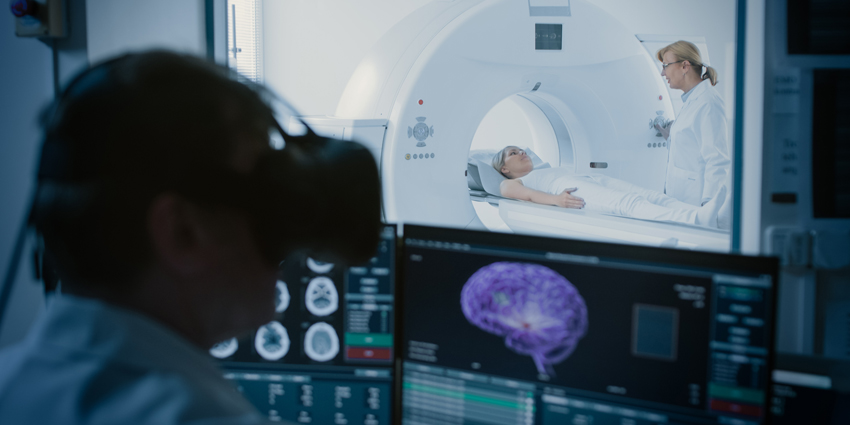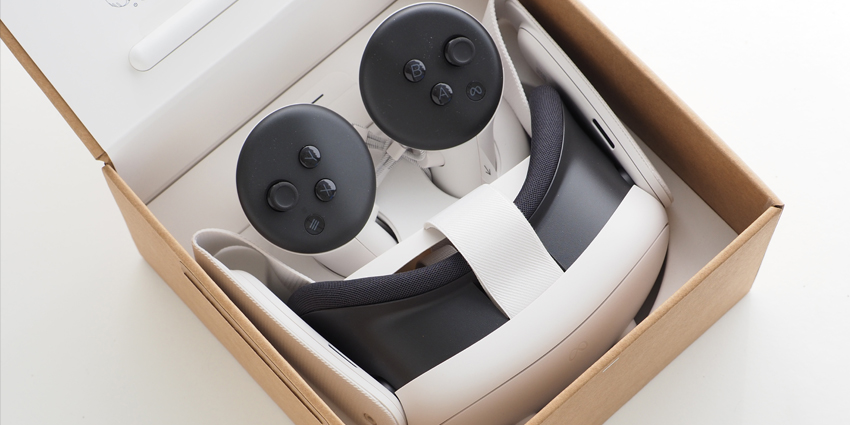Healthcare is among the top industries for virtual reality (VR) applications. From $2.70 billion in 2020, the virtual reality healthcare sector will reach nearly $41 billion USD by 2026 – a fifteen-fold increase in less than a decade.
One of the primary reasons why VR has so much potential for healthcare is its simulation capabilities. It allows researchers and medical professionals to simulate visual information in an accurate and interactive manner, impossible using traditional mediums.
For example, one could simulate specific parts of the human anatomy instead of having to craft physical models for conducting medical research. Simulations could also assist in stress and anxiety alleviation.
In 2021, the Yale Center for Medical Simulation received $1 million USD in funding to explore how simulations could help reduce physician stress and anxiety during the COVID-19 pandemic.
What Are Next Generation Simulations in Virtual Reality Healthcare?
Next-generation simulations refer to 3D visualizations of inanimate objects, people, living organisms, and digital designs that users can interact with, maneuver, and manipulate.
There can be two types of next-gen simulations: fully immersive simulations that exist in a VR environment and mixed reality (MR) simulations, where a hologram of the object or entity is projected onto the real world.
The healthcare industry relies on the representation and understanding of complex data, from molecular structures of drugs and therapeutic treatments to the various environmental conditions impacting the human body. With so many variables, it is difficult to accurately represent the data and study its behavior under different conditions.
This is where next-generation simulations can help by enabling reliable data representations managed using immersive technologies, while also reducing costs through reusability. Here are the benefits in more detail.
Benefits of Simulations in Virtual Reality Healthcare
By leveraging simulations, it is possible to:
-
Reduce costs – Simulations can significantly reduce the costs of healthcare training and demonstrations while increasing their impact. The design and software used for simulations can be applied multiple times, in multiple different use cases.
-
Increase impact – Interactive simulations are a better learning aid than 2D images or traditional physical models. This is because healthcare professionals can actually interact with the simulation through gestures, zooming in and out, highlighting various areas, and so on, to reinforce a piece of information with visual aids.
-
Cut down distractions – Immersive simulations in VR environments offer a distraction-free space for healthcare students and physicians. Inside VR, the user can focus on the visual material at hand and collaborate with others without being disturbed by interruptions from real-world surroundings.
-
Explore new areas – There are boundaries to what one can create and simulate using VR technology. For example, healthcare researchers can explore new molecular structures for experimental drugs without having to build prototypes. This streamlines the medical research process and speeds up drug approval.
-
Improve soft skills – Learners can also leverage simulated environments to hone soft skills. Challenging and unexpected scenarios can be recreated in VR with an authentic sense of urgency essential for developing leadership and teamwork skills, and can offer a safe environment for learning them.
-
Provide practical experience – Hands-on learning may not always be possible for rare or high-risk patient scenarios. In such cases, simulation technologies provide a viable alternative.
Virtual Reality Healthcare Use Cases that Leverage Next-Gen Simulations
There are a number of ways to implement simulation for virtual reality healthcare:
Early stages of clinical trials can use next-generation simulation to test multiple patient-therapy combinations and find an optimal match.
Clinical trials can be protracted and complex processes, resulting in extremely costly delays to both healthcare organizations and patients. Simulations can shorten clinical trials and fast-track drug discovery.
Training and competency documentation
VR/MR simulations are reusable in nature, meaning that healthcare and nursing students can undergo competency development several times through a standardized process.
Instructors can document learner competency levels at every cycle and gradually improved over time. Simulations and VR healthcare make competency development more structured and formal, often with phenomenal results.
Physicians and surgeons can prepare for complex procedures using next-generation simulations. This is particularly applicable for rare and high-risk scenarios, where preparation is essential but the precise patient conditions are difficult to emulate.
Here too, the standardized nature of simulation allows trainers to use modules multiple times, until a learner’s skills are perfected.
Simulations can also be used in collaborative environments, such as when multiple stakeholders are working together to finetune a drug design.
The simulation offers a consistent and accurate depiction of the information to all stakeholders in real-time so that they can share their ideas.
Therapy for stress and anxiety
Simulated environments can aid in alleviating stress by disconnecting healthcare professionals from stressful triggers surrounding them every day.
These professionals need to spend more than the typical 9-to-5 hours that apply to others, especially under extremely challenging conditions. Simulations can create an immersive and tranquil environment that has therapeutic benefits.
Companies Offering Simulation Solutions
While simulation technology is still young, there are several companies exploring how it could make a difference to virtual reality healthcare.
One such company is SimX, which offers a patented technology for collaborative learning in a VR environment. It has more than 300 prebuilt components for the healthcare sector, including over 120 simulated procedures for physicians and nurses.
PaleBlue is another VR and simulation company developing solutions for VR healthcare, which offers an affordable cardboard VR device that can be used by both doctors and patients.
Oxford Medical Simulation, a virtual reality healthcare company, offers virtual solutions for healthcare education and assessment. It has dedicated solutions for nursing, medicine, mental health, and pediatric procedures, along with remote learning and assessment solutions.
As VR and associated technologies like augmented and mixed reality evolve, more companies will emerge to push the boundaries of innovation in healthcare.







